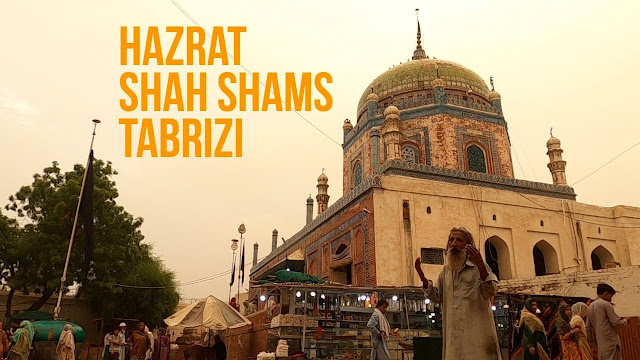Hazrat shah shams Tabrizi
The Sabzwari shrine is located in Multan, Pakistan, which is the location of the shrine.
A Muslim Pir from Sabzewar in present-day Iran by the name of Shah Shamsuddin Sabzwari Multani (died 1276 C.E. ), lived during the mid-12th century. Shamsuddin Sabzwari was one of the founders of Multan, which was founded in 1200 CE on the territory that is now known as Pakistan. There was a dargah that he established in the local area and he preached Islam to the locals. A saint has been created out of Shamsuddin Sabzwari due to his poetry and local traditions. He is buried in Multan along with his father, Shamsuddin Sabzwari, who died in 1276. Every year, Shamsuddin Sabzwari's Urs is celebrated in the month of June. After Mohammed's death, Islam began to spread throughout South Asia, and Sindh was the first region to embrace the religion.
A large part of Pir Shams' missionary activities took place in South Asia. Many non-Muslims converted to Islam as a result of his lectures on the need for a living guide.
Pir Shams spent the majority of his childhood and adolescence in Sabzwar, an area in Iran, where the Noor-a-Mubin indicates he was born. As a Sabzwari employee in his twenties, his father employed him by Pir Salahuddin. He succeeded his father as Da'wa of Badakshan and the northern part of India when he was in his early 30s. Missionary work he carried out in Badakshan, Kashmir, Punjab, Sindh, Gujarat, and Multan was carried out with great enthusiasm and ardor. As he spent much time in Multan in his later years before passing away, he is buried there in his final resting place. Shams Sabzwari Multani is also known as Pir Shams Sabzwari Multani, as well as Pir Shams Sabzwari Multani.
This is the first of a series of articles on Islam to be published over the next few weeks
The religions associated with Sufism
The tomb of Abdul Qadir Gilani can be found in Baghdad, Iraq
This Mausoleum contains an Ursula and in the Mausoleum there is a Mausoleum
The remains of Shamsuddin Sabzwari Multani ibn Pir Sayed Salahuddin, who was buried inside the Fort, are buried in a mausoleum near the site where he is said to have been buried. There is a garden located along the high bank of the Ravi River, near the old riverbed of the Ravi River, which has been established on the old riverbed of the Ravi River, close to the old riverbed of the Ravi River. As a result of his birth in 1200, he is estimated to have lived for more than a thousand years after he was born. The grandson of his grandfather, who died in 1278, built a shrine in honor of his grandfather in 1330, after his grandfather had died in 1278. A square tomb, measuring 30 feet (9.1 meters) in height, with a hemispherical dome on top, gives the tomb its name as it takes the form of a hemispherical dome. In addition to the ornamental tiles with decorative designs, it is also adorned with ornamental tiles adorned with decorative designs, in addition to the ornamental tiles with decorative designs.
A work's composition is the composition of the work itself
As a rule, Punjabi compositions are always ended by the composer emphasizing the spiritual significance of the composition. His goal is to enlighten his listeners so that they can benefit from his enlightened teachings, which will help to achieve enlightenment if they are able to overcome their constantly changing minds, so that they can benefit from his enlightened teachings to achieve enlightenment. As a matter of fact, there is nothing more tragic than the loss of one's life if one does not understand the deeper meaning of the ginns.

